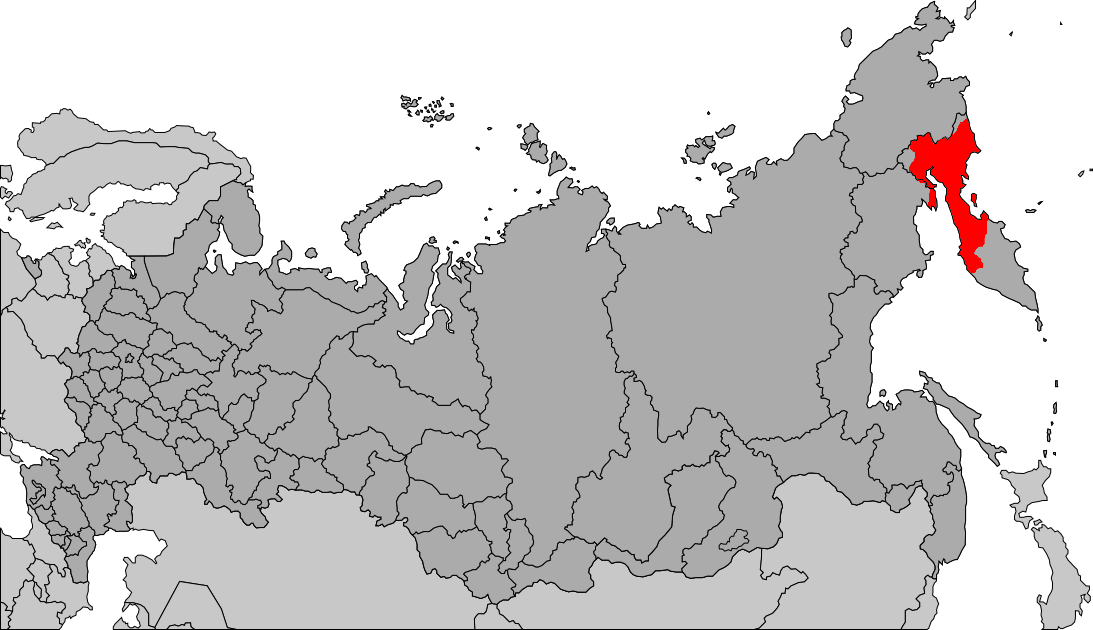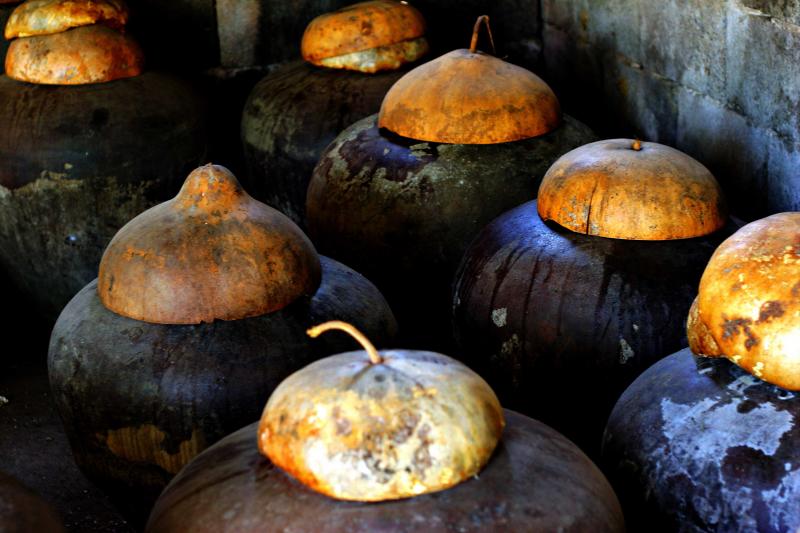|
Itelmens
The Itelmens (; ) are an Indigenous ethnic group of the Kamchatka Peninsula in Russia. The Itelmen language is distantly related to Chukchi and Koryak, forming the Chukotko-Kamchatkan language family, but it is now virtually extinct, the vast majority of ethnic Itelmens being native speakers of Russian. Native peoples of Kamchatka (Itelmen, Ainu, Koryaks, and Chuvans), collectively referred to as Kamchadals, had a substantial hunter-gatherer and fishing society with up to fifty thousand natives inhabiting the peninsula before they were decimated during the Russian conquest, both by brutal repressions of the rebellions of locals and by a major smallpox epidemic, in the 18th century. So much intermarriage took place between the natives and the Cossacks that ''Kamchadal'' now refers to the majority mixed population, while the term ''Itelmens'' became reserved for persistent speakers of the Itelmen language. By 1993, there were fewer than 100 elderly speakers of the language ... [...More Info...] [...Related Items...] OR: [Wikipedia] [Google] [Baidu] |
Itelmen Language
Itelmen () or Western Itelmen, formerly known as Western Kamchadal, is a language of the Chukotko-Kamchatkan family spoken on the western coast of the Kamchatka Peninsula. Fewer than a hundred native speakers, mostly elderly, in a few settlements in the southwest of Koryak Autonomous Okrug, remained in 1993. The 2021 Census counted 2,596 ethnic Itelmens, virtually all of whom are now monolingual in Russian. However, there are attempts to revive the language, and it is being taught in a number of schools in the region. (Western) Itelmen is the only surviving Kamchatkan language. It has two dialects, the Southern dialect of Khayryuzovo and the Northern dialect of Sedanka. Classification There are two points of view about where Itelmen belongs genetically. According to the first theory, Itelmen and Chukotkan descend from a common proto-language; the sharp differences of Itelmen, noticed at all levels, are explained by the intense influence of other languages. It is sug ... [...More Info...] [...Related Items...] OR: [Wikipedia] [Google] [Baidu] |
Chachy
Chachy is a female deity of the Itelmens of Kamchatka The Kamchatka Peninsula (, ) is a peninsula in the Russian Far East, with an area of about . The Pacific Ocean and the Sea of Okhotsk make up the peninsula's eastern and western coastlines, respectively. Immediately offshore along the Pacific .... She has outstanding intellectual insight but she is of average physical appearance. She is the wife of Kutka, and is smarter than him. When the world was young, the divine couple met year after year at the many great rivers, and begat a son and a daughter at each of these, from whom the Itelmen trace their genealogical origin. As each river then started with this unique first pair of parents, so the many dialects are thus explained. References Siberian deities Creator goddesses {{Deity-stub Wisdom goddesses Knowledge goddesses Legendary progenitors ... [...More Info...] [...Related Items...] OR: [Wikipedia] [Google] [Baidu] |
Kutka
Kutka, also styled as Kutga or Kutku, is a creation deity of the Itelmens of Kamchatka The Kamchatka Peninsula (, ) is a peninsula in the Russian Far East, with an area of about . The Pacific Ocean and the Sea of Okhotsk make up the peninsula's eastern and western coastlines, respectively. Immediately offshore along the Pacific .... Some sources indicate he was a supreme deity but others see him being subsidiary to Dusdaechschitsh, a uniquely supreme being. His wife, Chachy, is smarter than him. The Medical Critic and Guide, Volume 25 Critic and Guide Company, 1923 Published by the University of Michigan His son is Haetsch. References {{Deity-stub Siberian deities Creator gods Kamchatka Peninsula ... [...More Info...] [...Related Items...] OR: [Wikipedia] [Google] [Baidu] |
Kamchadals
The Kamchadals (, ) inhabit Kamchatka, Russia. The name "Kamchadal" was originally applied to the descendants of the local Siberians and aboriginal peoples (the Itelmens, Ainu, Koryaks and Chuvans) who assimilated with the Russians. The descendants of the mixed-blood Russian settlers in 18th-19th century are called Kamchadals these days. The Kamchadals speak Russian with a touch of local dialects of the aboriginal languages of Kamchatka. The Kamchadals engage in fur trading, fishing, market gardening and dairy farming, and are of the Russian Orthodox faith. Today, the name 'Kamchadal' may be applied to people who speak, or whose ancestors spoke, one of the Kamchadal languages. This article is about the Kamchadals in the first sense; for the second sense, see Itelmens History In 1767 and 1768, a Russian ship brought smallpox to the region for the first time, and it is believed to have killed three fourths of the native population. In the journal of Captain James Cook, "The s ... [...More Info...] [...Related Items...] OR: [Wikipedia] [Google] [Baidu] |
Kamchatka Peninsula
The Kamchatka Peninsula (, ) is a peninsula in the Russian Far East, with an area of about . The Pacific Ocean and the Sea of Okhotsk make up the peninsula's eastern and western coastlines, respectively. Immediately offshore along the Pacific coast of the peninsula runs the Kuril–Kamchatka Trench. The Kamchatka Peninsula, the Commander Islands, and Karaginsky Island constitute Kamchatka Krai of the Russian Federation. The majority of the 322,079 inhabitants are ethnic Russians, with about 13,000 being Koryaks (2014). More than half of the population lives in Petropavlovsk-Kamchatsky (179,526 in 2010) and nearby Yelizovo (38,980). The Kamchatka Peninsula contains the volcanoes of Kamchatka, a UNESCO World Heritage Site, that form part of the Ring of Fire. Geography Politically, the peninsula forms part of Kamchatka Krai. The southern tip is called Cape Lopatka. (Lopatka is Russian for spade.) The circular bay to the north of this on the Pacific side is Ava ... [...More Info...] [...Related Items...] OR: [Wikipedia] [Google] [Baidu] |
Koryaks
Koryaks () are an Indigenous people#North Asia, Indigenous people of the Russian Far East who live immediately north of the Kamchatka Peninsula in Kamchatka Krai and inhabit the coastlands of the Bering Sea. The cultural borders of the Koryaks include Tigilsky District, Tigilsk in the south and the Anadyr (river), Anadyr basin in the north. The Koryaks are culturally similar to the Chukchis of extreme northeast Siberia. The Koryak language and Alutor language, Alutor (which is often regarded as a dialect of Koryak), are linguistically close to the Chukchi language. All of these languages are members of the Chukotko-Kamchatkan languages, Chukotko-Kamchatkan Language families and languages, language family. They are more distantly related to the Itelmens on the Kamchatka Peninsula. All of these peoples and other, unrelated minorities in and around Kamchatka are known collectively as Kamchadals. Neighbors of the Koryaks include the Evens to the west, the Alutor to the south (on the ... [...More Info...] [...Related Items...] OR: [Wikipedia] [Google] [Baidu] |
Georg Wilhelm Steller
Georg Wilhelm Steller (10 March 1709 – 14 November 1746) was a German-born naturalist and explorer who contributed to the fields of biology, zoology, and ethnography. He participated in the Great Northern Expedition (1733–1743) and his observations of the natural world helped the exploration and documentation of the flora and fauna of the North Pacific region. Steller pursued studies in theology and medicine before turning his attention to the natural sciences. In 1734, he joined the Russian Academy of Sciences as a physician, eventually being selected to accompany Bering's expedition to the uncharted waters between Siberia and North America. Steller kept detailed records of species and cultures encountered, as well as ocean currents during the journey. Steller discovered many new species, as he documented numerous plants and animals, many of which were previously unknown to Western science. Notable among his discoveries was the Steller's sea cow and Steller's sea eagle. ... [...More Info...] [...Related Items...] OR: [Wikipedia] [Google] [Baidu] |
2010 Russian Census
The 2010 Russian census () was the second census of the Russian Federation population after the dissolution of the Soviet Union. Preparations for the census began in 2007 and it took place between October 14 and October 25. The census The census was originally scheduled for October 2010, before being rescheduled for late 2013, citing financial reasons,Всероссийская перепись населения переносится на 2013 год although it was also speculated that political motives were influential in the decision. However, in late 2009, [...More Info...] [...Related Items...] OR: [Wikipedia] [Google] [Baidu] |
Ainu People
The Ainu are an Indigenous peoples, indigenous ethnic group who reside in northern Japan and southeastern Russia, including Hokkaido and the Tōhoku region of Honshu, as well as the land surrounding the Sea of Okhotsk, such as Sakhalin, the Kuril Islands, the Kamchatka Peninsula, and the Khabarovsk Krai. They have occupied these areas, known to them as "Ainu Mosir" (), since before the arrival of the modern Yamato people, Yamato and Treaty of Aigun, Russians. These regions are often referred to as and its inhabitants as in historical Japanese texts. Along with the Yamato and Ryukyuan people, Ryukyu ethnic groups, the Ainu people are one of the primary historic ethnic groups of Japan. Official surveys of the known Ainu population in Hokkaido received 11,450 responses in 2023, and the Ainu population in Russia was estimated at 300 in 2021. Unofficial estimates in 2002 placed the total population in Japan at 200,000 or higher, as the near-total Cultural assimilation, assimilatio ... [...More Info...] [...Related Items...] OR: [Wikipedia] [Google] [Baidu] |
Fermented Fish
Fermented fish is a traditional preservation of fish. Before refrigeration, canning and other modern preservation techniques became available, fermenting was an important preservation method. Fish rapidly spoils, or goes rotten, unless some method is applied to stop the bacteria that produce the spoilage. Fermentation is a method which attacks the ability of microbials to spoil fish. It does this by making the fish muscle more acidic; bacteria usually cease multiplying when the pH drops below 4.5. A modern approach, biopreservation, adds lactic acid bacteria to the fish to be fermented. This produces active antimicrobials such as lactic and acetic acid, hydrogen peroxide, and peptide bacteriocins. It can also produce the antimicrobial nisin, a particularly effective preservative. Fermented fish preparations can be notable for their putrid smell. These days there are many other techniques of preserving fish, but fish is still fermented because some people enjoy the taste. An archa ... [...More Info...] [...Related Items...] OR: [Wikipedia] [Google] [Baidu] |
Yurt
A yurt (from the Turkic languages) or ger (Mongolian language, Mongolian) is a portable, round tent covered and Thermal insulation, insulated with Hide (skin), skins or felt and traditionally used as a dwelling by several distinct Nomad, nomadic groups in the Eurasian Steppe, steppes and Tian Shan, mountains of Inner Asia. The structure consists of a flexible angled assembly or latticework of wood or bamboo for walls, a door frame, ribs (poles, rafters), and a wheel (crown, compression ring) possibly steam-bent as a roof. The roof structure is sometimes self-supporting, but large yurts may have interior posts or columns supporting the crown. The top of the wall of self-supporting yurts is prevented from spreading by means of a tension band which opposes the force of the roof ribs. Yurts take between 30 minutes and three hours to set up or take down, and are generally used by between five and 15 people. Nomadic farming with yurts as housing has been the primary way of life in Cen ... [...More Info...] [...Related Items...] OR: [Wikipedia] [Google] [Baidu] |






